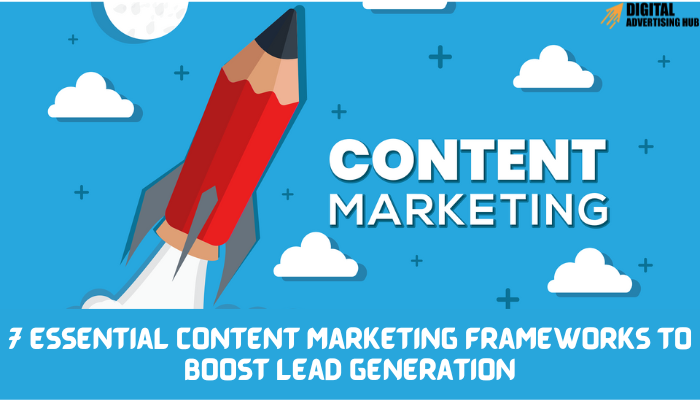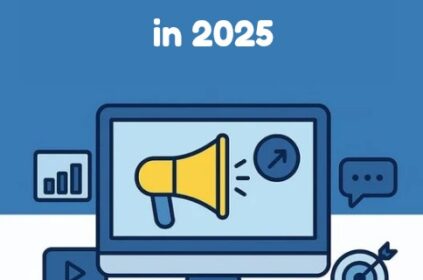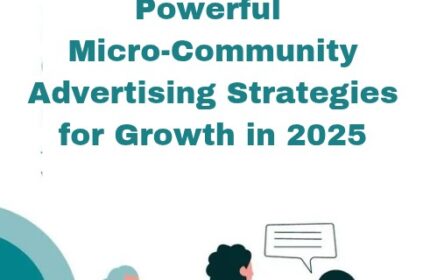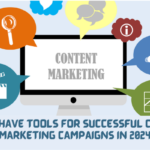In today’s digital landscape, content stands as the cornerstone of effective marketing strategies. Yet, amid the abundance of options, many businesses struggle to create content that not only resonates with their audience but also generates leads. It’s like navigating through a maze without a map.
However, amidst this content chaos, there’s a guiding light: content marketing frameworks. These structured approaches provide a roadmap for content creation and distribution, empowering businesses to navigate the digital terrain with purpose and precision.
In this article, we’ll explore seven powerful content marketing frameworks tailored specifically for lead generation. From crafting original content to curating external ideas and maximizing existing assets, each framework offers unique strategies to fuel your marketing efforts and propel your business forward.
Join me as we explore content marketing frameworks and uncover the key to unlocking your business’s full potential in the digital realm. Let’s embark on this journey together and discover the path to sustainable lead generation success.
Understanding the Need for Content Marketing Frameworks

In the fast-paced world of digital marketing, content serves as the lifeblood that fuels engagement, drives traffic, and converts leads into customers. However, without a structured approach, businesses risk creating content without a clear purpose or direction.
A content marketing framework is essentially a structured plan or blueprint that guides you in creating and distributing content strategically to achieve specific goals, such as lead generation.
It outlines the key steps, processes, and tactics involved in developing and deploying content effectively. This framework typically includes elements like audience analysis, content creation, distribution channels, promotion strategies, and performance measurement.
Think of it as a roadmap that helps you organize your efforts, ensure consistency, and maximize the impact of your content marketing initiatives.
Content marketing frameworks provide a systematic method for organizing and executing your content strategy. By establishing a framework tailored to your business and target audience, you can streamline the content creation process, maximize resources, and ensure consistency across all channels.
In essence, content marketing frameworks serve as a guiding light in the ever-evolving landscape of digital marketing, empowering you to navigate challenges with confidence and clarity.
With a solid framework in place, you can unlock the full potential of your content marketing efforts and drive sustainable growth for your business. Let us explore various frameworks to enhance your lead generation.
Content Marketing Frameworks for Creating Original Content
In the realm of content creation, originality is paramount. From captivating blog posts to engaging videos, creating original content is essential for establishing thought leadership and attracting potential customers.
Here are three powerful frameworks for creating original content that drives lead generation:
#1. Weekly Newsletter

A weekly newsletter serves as a direct line of communication with your audience, delivering valuable insights and updates straight to their inbox. To effectively leverage this framework for lead generation, follow these steps:
1. Capture Attention: Attract users through search and social media channels, enticing them to subscribe to your newsletter.
2. Add Native Value: Consistently provide valuable insights and content directly in the inbox, fostering trust and engagement with subscribers.
3. Include Conversion Points: Incorporate calls-to-action (CTAs) within the newsletter to encourage subscribers to take the next step, whether it’s downloading a case study or scheduling a consultation.
4. Deepen Engagement: Engage with subscribers on social media, invite them to participate in surveys or webinars, and nurture the relationship over time.
5. Convert Subscribers: As trust builds, convert subscribers into paying customers who are already familiar with your brand and offerings.
#2. Podcast Flywheel
Podcasting has emerged as a powerful platform for original content creation, allowing businesses to share their message in audio, video, and text-based formats. Here’s how to leverage the podcast flywheel framework for lead generation:
1. Harness the Power of Podcasting: Host a podcast or participate as a guest on existing podcasts within your niche to reach a wider audience.
2. Optimize Content Delivery: Transcribe podcast episodes to produce written content, and repurpose video clips for distribution on YouTube and social media platforms.
3. Leverage Personality and Expertise: Use podcasts to inject personality into your brand and showcase industry expertise, strengthening relationships with listeners and potential customers.
#3. Original Research:
Original research serves as a cornerstone of thought leadership, demonstrating industry expertise and providing valuable insights to your audience. Here’s how to implement the original research framework for lead generation:
1. Gather Insights: Conduct interviews or surveys with your target audience to gather valuable data and insights.
2. Analyze and Distill: Analyze the collected data to identify trends and distill key insights that resonate with your audience.
3. Publish and Promote: Share your findings through reports, webinars, and other channels, positioning your brand as a trusted source of industry knowledge.
4. Maximize Reach: Leverage original research to attract backlinks, enhance off-page SEO, and pitch guest articles to industry publications.
By leveraging these frameworks for creating original content, you can establish thought leadership, engage your audience, and drive meaningful lead generation results. Stay tuned as we explore additional frameworks for curating external content and maximizing existing assets in the next section.
Content Marketing Frameworks for Curating External Content
While creating original content is crucial, it’s not always feasible for every business due to resource constraints or other factors. In such cases, curating external content offers a valuable alternative for providing valuable insights and maintaining engagement with your audience. Here are three effective frameworks for curating external content:
#1. Influencer Co-Creation:
Influencers hold significant sway over their audiences and can lend credibility to your brand through collaboration. By co-creating content with influencers, you can leverage their expertise and reach to amplify your message. Here’s how to implement the influencer co-creation framework:
1. Identify Relevant Influencers: Identify influencers within your industry or niche whose audience aligns with your target demographic.
2. Engage and Collaborate: Reach out to influencers and propose collaboration opportunities such as guest blogging, joint webinars, or social media partnerships.
3. Reframe and Amplify: Reframe the influencer’s content to align with your brand messaging and objectives, amplifying the message to your own audience.
#2. Content Darwinism
Content Darwinism embraces the concept of evolution in content creation, focusing on experimentation and adaptation to maximize engagement.
By testing various content topics and formats on social media, businesses can identify what resonates with their audience and double down on successful strategies.
Here’s how to implement the content Darwinism framework:
1. Generate Ideas: Source content ideas from various channels, including employees, customer interviews, industry thought leaders, and social media trends.
2. Experiment and Iterate: Create and publish a variety of content across social media platforms, monitoring engagement metrics to identify successful content themes.
3. Optimize and Scale: Double down on content topics and formats that resonate with your audience, optimizing for maximum reach and engagement.
#3. Content Curation
Content curation involves sourcing and sharing relevant content from third-party sources with your audience. By curating high-quality content from reputable sources, you can position your brand as a trusted curator of industry knowledge and insights.
Here’s how to implement the content curation framework:
1. Source Relevant Content: Identify reputable sources within your industry or niche that produce high-quality content aligned with your audience’s interests.
2. Curate and Share: Select and share the most relevant and valuable content with your audience through various channels, adding your own insights or commentary where appropriate.
3. Engage and Build Relationships: Engage with content creators and industry influencers by sharing their content and participating in discussions, building valuable relationships within your industry.
By leveraging these frameworks for curating external content, businesses can augment their content strategy, provide additional value to their audience, and foster deeper engagement within their community.
Content Marketing Frameworks for Maximizing Existing Assets
In addition to creating original content and curating external resources, maximizing existing assets is a strategic approach to extending the lifespan and reach of your content.
By repurposing and recycling existing content, businesses can extract additional value and maintain a consistent presence across multiple channels.
Here are two effective frameworks for maximizing existing assets:
#1. Demand Capture Funnel
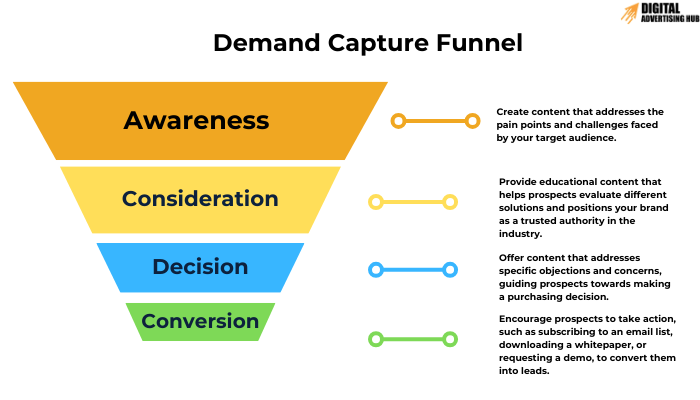
The demand capture funnel, also known as the marketing funnel or inbound funnel, is a fundamental framework for guiding potential customers through the buyer’s journey.
By aligning content with different stages of the funnel, businesses can capture existing demand and nurture leads toward conversion. Here’s how to implement the demand capture funnel framework:
1. Awareness Stage: Create content that addresses the pain points and challenges faced by your target audience, raising awareness of your brand and solutions.
2. Consideration Stage: Provide educational content that helps prospects evaluate different solutions and positions your brand as a trusted authority in the industry.
3. Decision Stage: Offer content that addresses specific objections and concerns, guiding prospects towards making a purchasing decision.
4. Conversion: Encourage prospects to take action, such as subscribing to an email list, downloading a whitepaper, or requesting a demo, to convert them into leads.
#2. Content Recycling
Content recycling involves repurposing existing content into different formats and distributing it across various channels to maximize exposure and engagement. By breathing new life into old content, businesses can reach new audiences and reinforce key messages.
Here’s how to implement the content recycling framework:
1. Refresh Core Content: Review and update existing content to ensure accuracy and relevance, considering potential updates to design or formatting.
2. Format for Distribution: Adapt core content into different formats suitable for various channels, including email, blog posts, social media, video clips, and more.
3. Distribute Across Channels: Develop a systematic approach to distributing repurposed content across key channels, maximizing visibility and engagement.
By adopting these frameworks for maximizing existing assets, businesses can extend the lifespan of their content, reach new audiences, and reinforce their brand messaging.
How to Select the Right Content Marketing Framework
Selecting the right content marketing framework is crucial for the success of any content strategy. It requires a careful assessment of your business objectives, target audience, existing resources, and desired outcomes.
Here are some key considerations to help you choose the most suitable content marketing framework:
#1. Understand Your Objectives: Begin by clarifying your content marketing goals and objectives. Are you aiming to increase brand awareness, generate leads, drive conversions, or establish thought leadership? Your objectives will influence the choice of framework and the content tactics employed.
#2. Assess Your Resources: Evaluate your available resources, including budget, time, expertise, and content assets. Determine whether you have the capacity to create original content, curate external content, or maximize existing assets effectively.
#3. Know Your Audience: Gain a deep understanding of your target audience’s preferences, pain points, and behavior. Identify the channels and formats they prefer and tailor your content marketing framework to resonate with their needs and interests.
#4. Consider Your Industry and Niche: Take into account the unique characteristics of your industry and niche. Certain content marketing frameworks may be more effective in specific sectors or verticals, depending on industry trends, audience behavior, and competitive landscape.
#5. Evaluate Past Performance: Review the performance of your past content marketing efforts. Identify what has worked well and what areas need improvement. Use data and analytics to inform your decision-making process and optimize future content strategies.
#6. Stay Flexible and Adaptive: Keep in mind that the content marketing landscape is constantly evolving. Be prepared to adapt and iterate your chosen framework based on changing market dynamics, emerging trends, and feedback from your audience.
By carefully considering these factors and aligning them with your business objectives, you can confidently select the right content marketing framework that best suits your needs.
Whether you opt for creating original content, curating external content, or maximizing existing assets, the key is to remain agile, data-driven, and focused on delivering value to your audience.
If you need assistance in selecting or implementing a content marketing framework for your business, feel free to reach out for personalized guidance and support.
Conclusion
In conclusion, content marketing frameworks serve as essential guides for businesses seeking to drive lead generation and maximize their digital strategy’s effectiveness. By adopting the right framework, you can streamline your content creation process, enhance audience engagement, and ultimately, drive meaningful results.
Whether you choose to focus on creating original content, curating external content, or maximizing existing assets, the key is to align your approach with your business goals, target audience preferences, and available resources.
As you embark on your content marketing journey, keep in mind the importance of continuous learning, experimentation, and adaptation. The digital landscape is constantly evolving, and staying ahead requires agility, creativity, and a willingness to embrace change.
If you’re ready to take your content marketing efforts to the next level, don’t hesitate to reach out for personalized guidance and support. Our team is here to help you navigate the complexities of content marketing and develop strategies that drive tangible results for your business.
Thank you for joining us on this exploration of content marketing frameworks for lead generation. We look forward to helping you unlock the full potential of your content marketing initiatives and achieve your business objectives. Stay inspired, stay innovative, and keep creating remarkable content that resonates with your audience.

